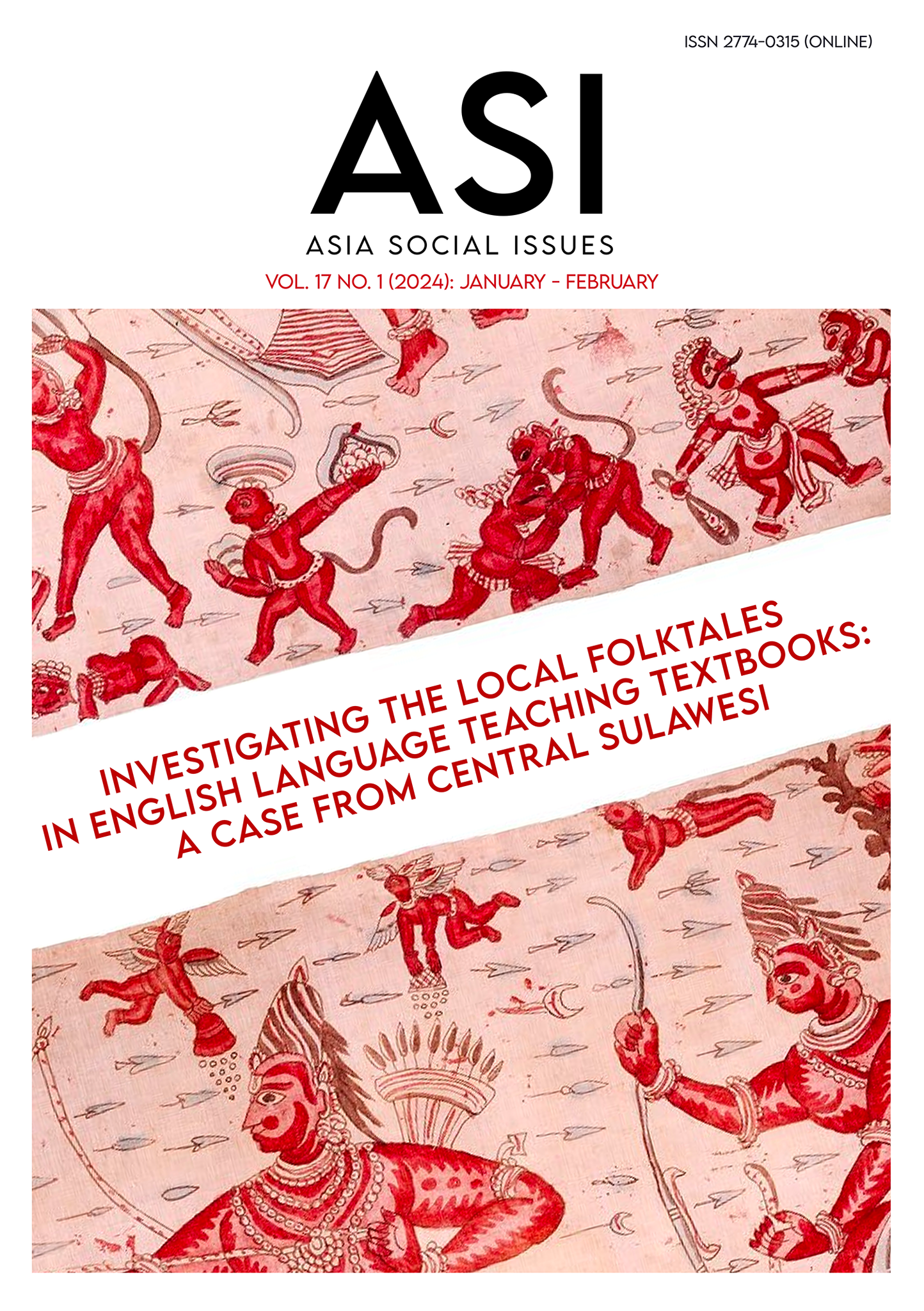Innovative Application of Guangdong Chaoyang Paper Cutting Elements in Cheongsam Design
Main Article Content
Abstract
Cheongsam is usually made of brocade, satin, crepe, and silk. The patterns on the fabrics used are one of cheongsam design’s most essential fashion features. Therefore, the idea is to integrate a national intangible cultural heritage of Chaoyang paper-cutting folk art into cheongsam design, so as to inject some blood of local traditional culture into cheongsam and endow it with a different charm. This study proposes integrating two art forms, i.e., paper-cutting elements and cheongsam, to create a unique cultural and fashion product. Chaoyang paper cutting elements have been innovatively extracted and embedded in cheongsam clothing design through reading and querying the relevant materials. A proposed innovative mode of extracting and integrating the paper cutting elements, dubbed adaptive integration and mutual feature integration, respectively, ensured the creation of an aesthetically pleasing fashion good involving two distinct cultural elements. Four primary pattern arrangements have been presented namely: border design, all over pattern I &II and central placement. This is the first time a study proposed the integration of two prominent art forms to create a unique cultural and fashion product.
Article Details

This work is licensed under a Creative Commons Attribution-NonCommercial-NoDerivatives 4.0 International License.
Copyright: CC BY-NC-ND 4.0
References
Cheng, F. K. (2021). The Qipao: The carrier of Chinese cultural and philosophical symbols. IAFOR Journal of Arts & Humanities, 8, 107-116.
Gao, G. (2005). A narrative of Chinese clothing and ornament. Beijing, China: GuangMing Daily Press.
Guo, J. (2014). Aesthetic characteristics of Shanghai Qipao in Chinese women’s dress culture (pp. 509-511). In Proceedings of the International Conference on Education, Language, Art and Intercultural Communication (ICELAIC 2014). Zhengzhou, Henan, China: Atlantis Press.
Hsu, C.-H., & Tsai, W.-C. (2015). A design strategy of cultural and creative products on the global market (pp. 36-48). In Proceedings of the Cross-Cultural Design Methods, Practice and Impact. Los Angeles, CA, USA: Springer International.
Huang, X.-l. (2017). Research on typical craftsmanship of silk Cheongsam (pp.1442-1448). In Proceedings of the 5th International Conference on Machinery, Materials and Computing Technology (ICMMCT 2017). Beijing, China: Atlantis Press.
Huiming, K. (2021). Inheritance and innovation of Chinese intangible cultural heritage paper cutting Culture -Taking Chaoyang paper cutting as an example. China Pulp & Paper, 40(10), 9-10.
Jia, C. (2018). The impact of north Shaanxi paper cutting on local regional visual design (pp. 799-802). In Proceedings of the 8th International Conference on Management, Education and Information (MEICI 2018). Shenyang, China: Atlantis Press.
Li, G. H., Shi, R., & Liu, G. L. (2011). The application of Chinese element in fashion design. Advanced Materials Research, 331, 582-585.
Lin, C. Y. (2022). How the Qipao became the quintessence of Chinese elegance. Retrieved from https://www.thecollector.com/how-qipao-became-timeless-chinese-elegance/
Liu, Y., & Wang, P. (2019). Research on the Application of Chinese Paper-Cut Art in the Design of Tourism Costume Products (pp. 689-692). In Proceedings of the 5th International Conference on Education Technology, Management and Humanities Science (ETMHS 2019). Xi’an, China: Francis Academic Press
Liu, Z. (2018a). The cultural meaning and aesthetic implication of Chinese cheongsam (pp. 326-330). In Proceedings of the 4th International Conference on Arts, Design and Contemporary Education (ICADCE 2018). Zhengzhou, China: Atlantis Press.
Liu, Z. (2018b). The Cultural Meaning and Aesthetic Implication of Chinese Cheongsam (pp. 326-330). In Proceedings of the 4th International Conference on Arts, Design and Contemporary Education (ICADCE 2018). Zhengzhou, China: Atlantis Press.
Melichson, H. (2011). The art of paper cutting, Beverly, Massachusetts, USA, Quarry books. Beverly, 100 Cummings Center: Quarry Books.
Miranda. (2018). Parts of the Qipao (Cheongsam): A comprehensive guide to the qipao anatomy. Retrieved from http://www.thepankou.com/qipao-cheongsam-parts-comprehensive-guide/
Network, C. N. (2021). Why is the Olympic Gymnastics suit on fire? Behind it is a story of rebirth of Nirvana. Retrieved from https://m.sohu.com/a/481394539_260616/?pvid=000115_3w_a_trans_=010004_wapxfzlj
Nitish, C. R., Luo, R., Halim, A. F. M. F., & Arpan, C. (2020). Design and Development of the Fashionable Qipao by Infliction of Hand Made Khadi Fabric. Art and Design Review, 8(1), 49-60.
Sheng, Y. (2010). Modern transformation of Chinese clothing viewed from the change and popularity of cheongsam. Journal of Ningbo University Liberal Arts Edition, 23(3), 127-130.
Shuaib, A. A., & Enoch, O. F. (2014). Integrating the Malay traditional design elements into contemporary design: An approach towards sustainable innovation. Procedia - Social and Behavioral Sciences, 129, 59-67.
Wang, X. (2013). Lucky motifs in Chinese folk art: Interpreting Paper-cut from Chinese Shaanxi. Asian Studies, 2(2013), 123-141.
Wu, K.M (2015). Reinventing Chinese tradition: The cultural politics of late socialism. Champaign, Illinois: USA, University of Illinois Press.
Xiaowen, C. (2021). Inheritance and development of Chinese folk paper-cut art. (pp. 237-241). In Proceedings of the Редакційна колегія, 1st International Scientific and Practical Conference, Scientific Trends and Trends in The Context of Globalization. Umeå, Sweden: Scientific Publishing Center.
Ying, D. (2016). On the transformation and popularity of the cheongsam in modern time (pp. 606-613). In Proceedings of the International Conference on Electronics, Mechanics, Culture and Medicine. Shenyang, China: Atlantis Press.
Yuan, J., & Fang, S. (2002). China’s Qipao. Beijing, China: China Textile Press.
Zhang, J., Zhan, Y., & Cui, R. (2022). Cultural interaction: The transformation of textile design for traditional cheongsam in the republic of china. Fibres & Textiles in Eastern Europe, 30, 19-26.
Zhao, X. (2014). The collision of tradition and modernity, application of paper-cut art in modern design (pp. 284-288). In Proceedings of the 2014 International Conference on Information, Business and Education Technology (ICIBET 2014). Beijing, China: Atlantis Press.


